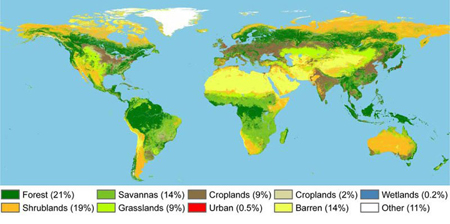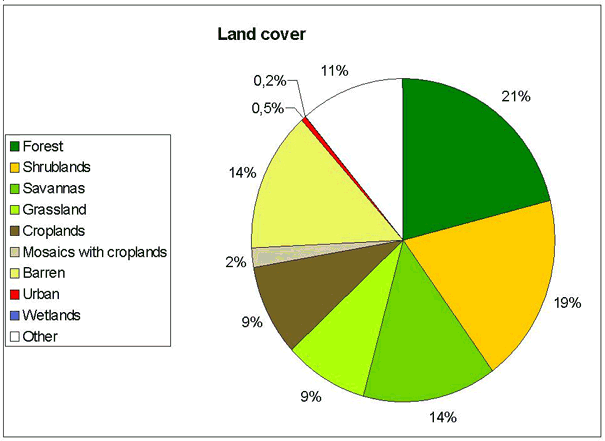1. Global Land Use Change
Land use and land use change (1/2)
This tutorial will guide you through the following questions. What is land cover and land use change? How is it bred and where is it most common?
Tasks:
1. Compare the global allocation of land cover in 2000 with the potential vegetation distribution (when the earth is not sewn by humans), for example in Europe or in North America.
2. Explain the differences. Classify the causes and factors in the following groups: natural and man-made, direct and indirect, long- and short term.
3. Guess the future changes. In your opinion, which zones will undergo the largest changes? Justify your opinion!
In geography one understands land cover to be the physical status of the terrain like agricultural crop land, forests, and mountains - also included are some man-made structures such as houses and streets (Meyer 1995).

Source: The University of Texas
Today, satellite information is used to compile global and regional land cover and land cover changes (Schinninger 2008).

Data: Schinninger 2008
The largest modifications in land cover resulted in the past through transformations in forests and grasslands in agricultural crop lands and pastures. The agricultural crop lands and pastures have accumulated in the last 300 years, respectively 460% and 560% (Klein Goldewijk 2001).
Extra Material:
Direct Comparison of Land Cover 2000 and Potential Vegetation Distribution